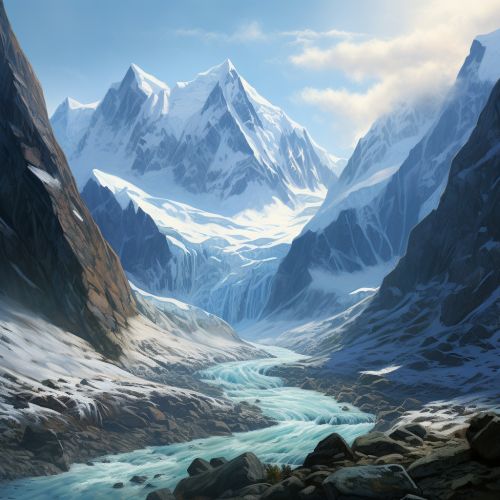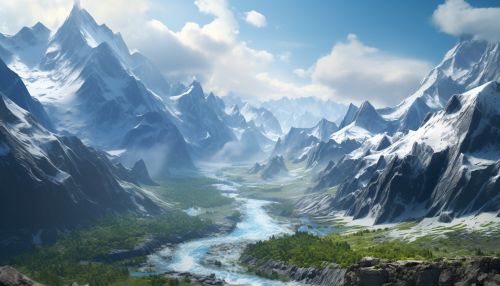Valley glacier
Introduction
A valley glacier is a type of glacier that forms in a mountainous region and moves down pre-existing valleys. These glaciers are also known as alpine or mountain glaciers. They are characterized by their long, narrow shape and are typically found in high-altitude, mountainous regions around the world.
Formation
The formation of a valley glacier begins with the accumulation of snow in a high-altitude area, often in a bowl-shaped depression known as a cirque. Over time, the snow compresses into ice under its own weight, forming a névé. As more snow accumulates and compresses, the névé turns into firn, a granular type of snow that is more dense than fresh snow but less dense than glacial ice. Eventually, the firn turns into glacial ice, marking the birth of a glacier.


Movement
Valley glaciers move under the force of gravity, flowing down valleys like rivers of ice. The rate of movement varies depending on factors such as the slope of the valley, the thickness of the ice, and the temperature. The movement of a valley glacier is facilitated by glacial motion, which includes processes such as internal deformation, where the ice flows as a viscous fluid, and basal sliding, where the glacier slides over the ground beneath it.
Features
Valley glaciers are responsible for creating a number of distinctive landforms. As they move, they erode the landscape, carving out U-shaped valleys. The steep sides and flat bottoms of these valleys are a stark contrast to the V-shaped valleys formed by rivers. Other features associated with valley glaciers include cirques, arêtes, and hanging valleys.
Impact on the Environment
Valley glaciers have a significant impact on the environment. They act as natural reservoirs of fresh water, storing it in the form of ice during colder periods and releasing it during warmer periods. This can have a major impact on local ecosystems and human communities, providing a reliable source of water for drinking, irrigation, and hydroelectric power.
